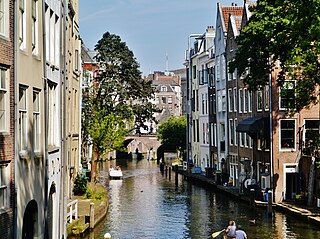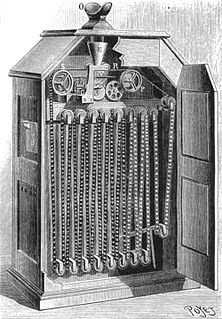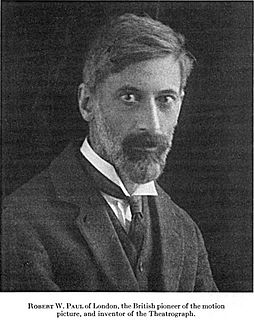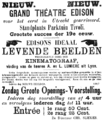
Although the advent of film as an artistic medium is not clearly defined, the commercial, public screening of ten of Lumière brothers' short films in Paris on 28 December 1895 can be regarded as the breakthrough of projected cinematographic motion pictures. There had been earlier cinematographic results and screenings by others like the Skladanowsky brothers, who used their self-made Bioscop to display the first moving picture show to a paying audience on 1 November 1895 in Berlin, but they lacked either the quality, financial backing, stamina or the luck to find the momentum that propelled the cinématographe Lumière into a worldwide success.

Thomas Alva Edison was an American inventor and businessman. He developed many devices in fields such as electric power generation, mass communication, sound recording, and motion pictures. These inventions, which include the phonograph, the motion picture camera, and early versions of the electric light bulb, have had a widespread impact on the modern industrialized world. He was one of the first inventors to apply the principles of organized science and teamwork to the process of invention, working with many researchers and employees. He established the first industrial research laboratory.

Utrecht is the fourth-largest city and a municipality of the Netherlands, capital and most populous city of the province of Utrecht. It is located in the eastern corner of the Randstad conurbation, in the very centre of mainland Netherlands; it has a population of 361,966 as of December 1, 2021.

A movie theater, cinema, or cinema hall, also known as a picture house, the pictures, picture theater, the silver screen, or the movies, is a building that contains auditoria for viewing films for entertainment. Most, but not all, theaters are commercial operations catering to the general public, who attend by purchasing a ticket. Some movie theaters, however, are operated by non-profit organizations or societies that charge members a membership fee to view films.

The Kinetoscope is an early motion-picture exhibition device. The Kinetoscope was designed for films to be viewed by one individual at a time through a peephole viewer window at the top of the device. The Kinetoscope was not a movie projector, but it introduced the basic approach that would become the standard for all cinematic projection before the advent of video. It created the illusion of movement by conveying a strip of perforated film bearing sequential images over a light source with a high-speed shutter. A process using roll film was first described in a patent application submitted in France and the U.S. by French inventor Louis Le Prince. The concept was also used by U.S. inventor Thomas Edison in 1889, and subsequently developed by his employee William Kennedy Laurie Dickson between 1889 and 1892. Dickson and his team at the Edison lab also devised the Kinetograph, an innovative motion picture camera with rapid intermittent, or stop-and-go, film movement, to photograph movies for in-house experiments and, eventually, commercial Kinetoscope presentations.
The Biograph Company, also known as the American Mutoscope and Biograph Company, was a motion picture company founded in 1895 and active until 1916. It was the first company in the United States devoted entirely to film production and exhibition, and for two decades was one of the most prolific, releasing over 3000 short films and 12 feature films. During the height of silent film as a medium, Biograph was America's most prominent film studio and one of the most respected and influential studios worldwide, only rivaled by Germany's UFA, Sweden's Svensk Filmindustri and France's Pathé. The company was home to pioneering director D. W. Griffith and such actors as Mary Pickford, Lillian Gish, and Lionel Barrymore.

Birt Acres was an American and British photographer and film pioneer. Among his contributions to the early film industry are the first working 35 mm camera in Britain (Wales), and Birtac, the first daylight loading home movie camera and projector. He also directed a number of early silent films.

William Nicholas Selig was a pioneer of the American motion picture industry. In 1896 he created one of the first film production companies, Selig Polyscope Company of Chicago. Selig claimed to have made the first narrative film shot in Los Angeles, The Count of Monte Cristo, and, in 1909, what may have been the first permanent L.A. studio, in Edendale, Los Angeles, and being the first U.S. company to shoot a two-reel film, Damon and Pythias (1908), and the first true serial (film), The Adventures of Kathlyn (1913-1914).

Edison Studios was an American film production organization, owned by companies controlled by inventor and entrepreneur, Thomas Edison. The studio made close to 1,200 films, as part of the Edison Manufacturing Company (1894–1911) and then Thomas A. Edison, Inc. (1911–1918), until the studio's closing in 1918. Of that number, 54 were feature length, and the remainder were shorts. All of the projects by this company had fallen into the public domain because they were released before 1925.

Robert William Paul was an English pioneer of film and scientific instrument maker.

L'Arroseur Arrosé is an 1895 French short black-and-white silent comedy film directed and produced by Louis Lumière and starring François Clerc and Benoît Duval. It was first screened on June 10, 1895.

Tamil cinema, also known as Kollywood, is the Indian filmmaking industry of Tamil-language motion pictures. It is based in Chennai, Tamil Nadu, in the Kodambakkam neighbourhood, leading to the industry's nickname Kollywood, the word being a portmanteau of Kodambakkam and Hollywood.

Classic Cinemas is the largest Illinois based movie theatre chain. Headquartered in Downers Grove, Illinois, it operates 15 locations with 131 screens in Illinois and Wisconsin under Tivoli Enterprises ownership. Its first theatre and company namesake is the restored Tivoli, which has over 1000 seats in the original auditorium, in Downers Grove, Illinois. A second auditorium, with 33 seats, was completed in 2021.
Edward George Turner was a British entrepreneur who operated the first company in Britain to rent films and he invented one of the earliest sound synchronization systems.

Willy Mullens was a Dutch producer, director, and promoter of movies. He is considered to be one of the early pioneers of Dutch cinema, and one of his movies was recently elected as one of only sixteen "Canonical Dutch movies." With his brother Bernardus Albertus (Albert) he started around the turn of the 20th century one of the earliest Dutch film production companies, Alberts Frères. By the second decade of that century he was making documentary films that premiered for royalty. His second company, Haghefilm, dominated the Dutch film market between the two World Wars.

Marie-Georges-Jean Méliès was a French illusionist, actor, and film director who led many technical and narrative developments in the earliest days of cinema.

M.H. Laddé was a Dutch photographer and film director. He was the director of the first Dutch fictional film, the 1896 comedy Gestoorde hengelaar.

Gestoorde hengelaar was the first Dutch fictional film, made by M.H. Laddé in 1896 and was produced by the studio Eerst Nederlandsch Atelier tot het vervaardigen van Films voor de Bioscoop en Cinematograaf van M.H. Laddé en J.W. Merkelbach.

Lyman Hakes Howe was an American entertainer, motion picture exhibitor and early filmmaker. He entered the entertainment industry in 1883, began touring with a phonograph in 1890, and showed his first movies in 1896. He was the first person to use a phonograph for background sound effects in movies. A Pennsylvania State Historical Marker in the city of Wilkes-Barre––where Howe was born, raised and spent his adult life––is dedicated to him. Howe was active in the eastern United States and Canada. Although Howe died in 1923, his film company continued operating for a number of years after his death, into the Great Depression.

















